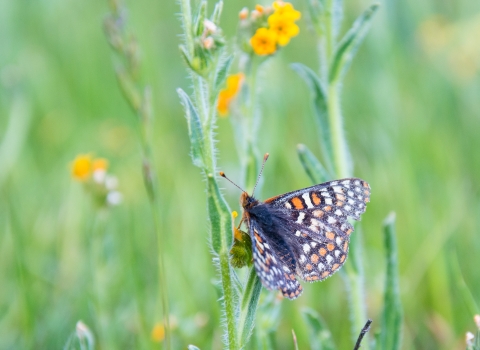DENVER – Working collaboratively with our partner, the Big Bend Groundwater Management District #5 (District), and the local community, the U.S. Fish and Wildlife Service (Service) identified voluntary solutions to remedy water impairment at Quivira National Wildlife Refuge – located in south-central Kansas. Through this effort, the Service does not intend to submit a request to secure water for Quivira National Wildlife Refuge. Cooperation and collaboration with local communities are a priority for the Trump Administration.
“The Trump Administration has prioritized working families and communities, as well as conservation of species and their habitats. The U.S. Fish and Wildlife Service is committed to working alongside our Quivira National Wildlife Refuge neighbors to try to find a commonsense solution that is equitable to us all in utilizing and conserving such a vital resource as water,” said Service Director Aurelia Skipwith. “Through partnership and leveraging new technologies, we are excited to use the best available science to inform a balanced approach to water distribution.”
For more than six decades, the congressionally designated refuge has protected more than 22,000 acres of unique and rare inland salt marsh salt marsh
Salt marshes are found in tidal areas near the coast, where freshwater mixes with saltwater.
Learn more about salt marsh and sand prairie habitats that are vital to more than 300 species of birds, some threatened and endangered, in the Central Flyway. The Big and Little Salt marshes attract thousands of migratory waterfowl, shorebirds and wetland birds, providing them with food, water, shelter and a place to rest.
In 2016, the Kansas Chief Engineer found the refuge’s senior state water rights along Rattlesnake Creek were being significantly infringed upon by junior water right holders. In July 2020, the Service and District entered an MOA establishing a framework to develop short- and long-term water conservation actions. This MOA was instrumental in highlighting the collaborative efforts and partnership support for the U.S Department of Agriculture Natural Resources Conservation Service (NRCS) grant to the District. The NRCS grant will allow for the development of an augmentation workplan that supplements water distributed from groundwater wells, conduct water quality and quantity feasibility testing, and complete an environmental assessment under the National Environmental Policy Act. The activities that will be carried out as a result of this grant will benefit the family farmers, ranchers and agricultural communities that fall within the District area of responsibility.
U.S. Senator Jerry Moran’s coordinated water management discussions led to the signing of a Memorandum of Agreement (MOA) between the Service and the district this summer in Saint John, Kansas, and the sustainable path forward on this longstanding water management challenge.
“The U.S. Fish and Wildlife Service’s decision to not request to secure water in 2021 for Quivira National Wildlife Refuge demonstrates their continued commitment to work towards fulfilling the water needs of both the refuge and local producers,” said U.S. Senator Moran (KS). “Through a grant secured earlier this month for watershed planning at Rattlesnake Creek and the partnership of Director Skipwith, we are on track to establish long-term solutions that will support the refuge, Kansas producers and the regional economy.”
Although the Service does not intend to send a request to secure water for the coming year, both parties will continue to work toward meeting milestones from the agreement to develop both short- and long-term water conservation actions. The partners strive to maintain healthy wildlife populations while supporting the economic viability of farming and ranching operations in America’s heartland.
The mission of the U.S. Fish and Wildlife Service is working with others to conserve, protect, and enhance fish, wildlife, plants, and their habitats for the continuing benefit of the American people. For more information on our work and the people who make it happen in the West, connect with us through any of these social media channels: Facebook, Twitter, Flickr, YouTube, and Instagram.



